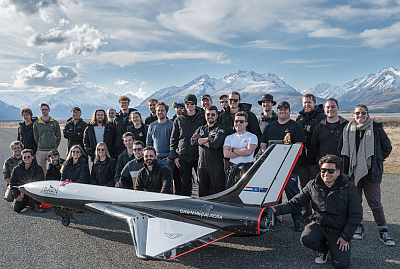Dawn Aerospace begins offering its suborbital spaceplane to customers
Though the company has only so far flown a small prototype on low altitude supersonic test flights, the spaceplane startup Dawn Aerospace is now taking orders for those who wish to put payloads on its proposed Aurora suborbital spaceplane, targeting a first flight in late 2026.
Dawn Aerospace is taking orders now for the Aurora spaceplane for deliveries starting in 2027. The company has not disclosed pricing for the vehicle, and [CEA Stefan] Powell suggested the company would tailor pricing to each customer. He said that the company estimates, based on market research, that a per-flight price of $100,000 is “absolutely tenable,” and the price could go higher for missions with more customized flight needs. He projects Aurora could fly 100 times a year and has a design life of 1,000 flights, with a total revenue per vehicle of about $100 million.
Though the company had originally touted itself as developing an orbital spaceplane, it recently shifted its goals, at least for the present, to building a very powerful jet comparable in some ways to the X-15, capable of reaching altitudes exceeding 50 miles for short periods and short periods of weightlessness. This capability has some value, and Dawn Aerospace has decided to market it for profit, rather than wait for the orbital version that might be years away.
Though the company has only so far flown a small prototype on low altitude supersonic test flights, the spaceplane startup Dawn Aerospace is now taking orders for those who wish to put payloads on its proposed Aurora suborbital spaceplane, targeting a first flight in late 2026.
Dawn Aerospace is taking orders now for the Aurora spaceplane for deliveries starting in 2027. The company has not disclosed pricing for the vehicle, and [CEA Stefan] Powell suggested the company would tailor pricing to each customer. He said that the company estimates, based on market research, that a per-flight price of $100,000 is “absolutely tenable,” and the price could go higher for missions with more customized flight needs. He projects Aurora could fly 100 times a year and has a design life of 1,000 flights, with a total revenue per vehicle of about $100 million.
Though the company had originally touted itself as developing an orbital spaceplane, it recently shifted its goals, at least for the present, to building a very powerful jet comparable in some ways to the X-15, capable of reaching altitudes exceeding 50 miles for short periods and short periods of weightlessness. This capability has some value, and Dawn Aerospace has decided to market it for profit, rather than wait for the orbital version that might be years away.

